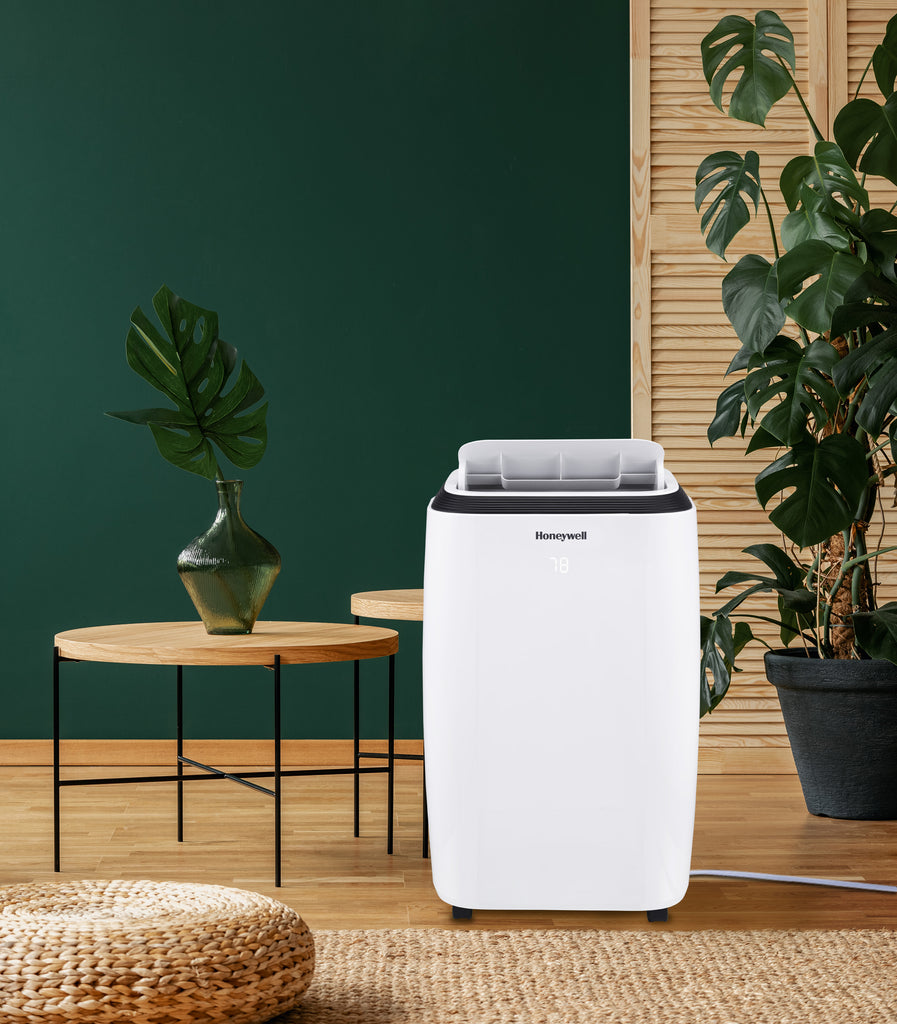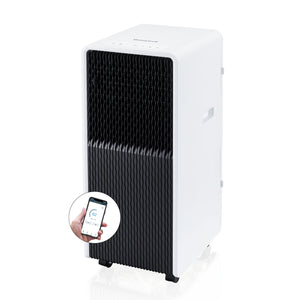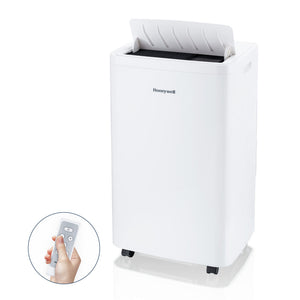
How Do Portable Air Conditioners Work
A portable air conditioner (PAC) is a simple solution for meeting your cooling needs. But have you ever wondered how a portable AC works? Dive in to learn about the inner workings of these convenient appliances.
Smooth operator
Portable air conditioners largely operate using the same principles as any other air conditioning unit, just on a smaller scale. They pull warm air from a room, run it over refrigerated coils, and expel warm air and moisture through an exhaust hose to the outside.
1. A fan brings warm, humid air from the room into the portable AC.
2. The warm air runs over an evaporator coil containing refrigerant that absorbs heat from the air. During this process, moisture is also removed from the air and condensed onto the coil.
3. The now cool, dehumidified air flows back into the room.
4. The moisture that was extracted from the humid air is removed from the unit via one of several methods (see “Drainage designs”) below.
5. When the heat from the warm air is transferred to the liquid refrigerant, it converts into a high-pressure gas (evaporates).
6. This gas then runs through a condenser coil and is compressed back into a liquid. The heat generated through this process is vented to the outside through an exhaust hose.
7. The newly cooled refrigerant starts the process again as more warm air from the room enters the portable air conditioner.

A note on single- and dual-hose PACs
As discussed in our previous post, single- and dual-hose portable ACs operate a little differently. A single-hose unit draws warm air in from the room, creating negative air pressure that allows warm air from cracks and other openings to seep back indoors. A dual-hose AC, however, uses one hose to draw air into the room from the outside, expelling heated air and moisture through the second exhaust hose.

Drainage designs
Different portable air conditioning units have different methods of moisture removal, including the following:
• Manual bucket drainage
o You mostly find this method in older units where water is collected in a built-in condensate tank.
o Some units have a detachable tank that can be removed and emptied when it gets full.
o Other units have built-in tanks, with a small hole at the back of the unit that remains sealed when the AC is in use. To drain this kind of model, you have to pick up the unit and tip it so you can drain it through the hole.
• Drain hose
o With these types of units, a separate drain hose can be placed out of the window or into a bucket to drain the condensate.
o Some units with drain hoses just use gravity. You have to put the outer end of the hose lower than the one attached to the condensate tank so the water flows out.
o Other units have a pump that allows the outer end of the hose to be above the inner condensate tank. The pump draws condensate out of the tank so it can be emptied vertically or horizontally.
• Automatic evaporation
o In this case, moisture is automatically drained through the same exhaust hose that expels hot air from the room.
o In areas with high humidity, you might still need to manually drain these self-evaporating units.
Time to cool down
Now that you understand the basics of how a portable air conditioner works, you can roll yours over and enjoy a cool, brisk breeze from this amazing appliance!
Contact us
If you have any feedback or questions you’d like us to address, please get in touch with us at info@jmatek.com. We’d love to hear from you.






